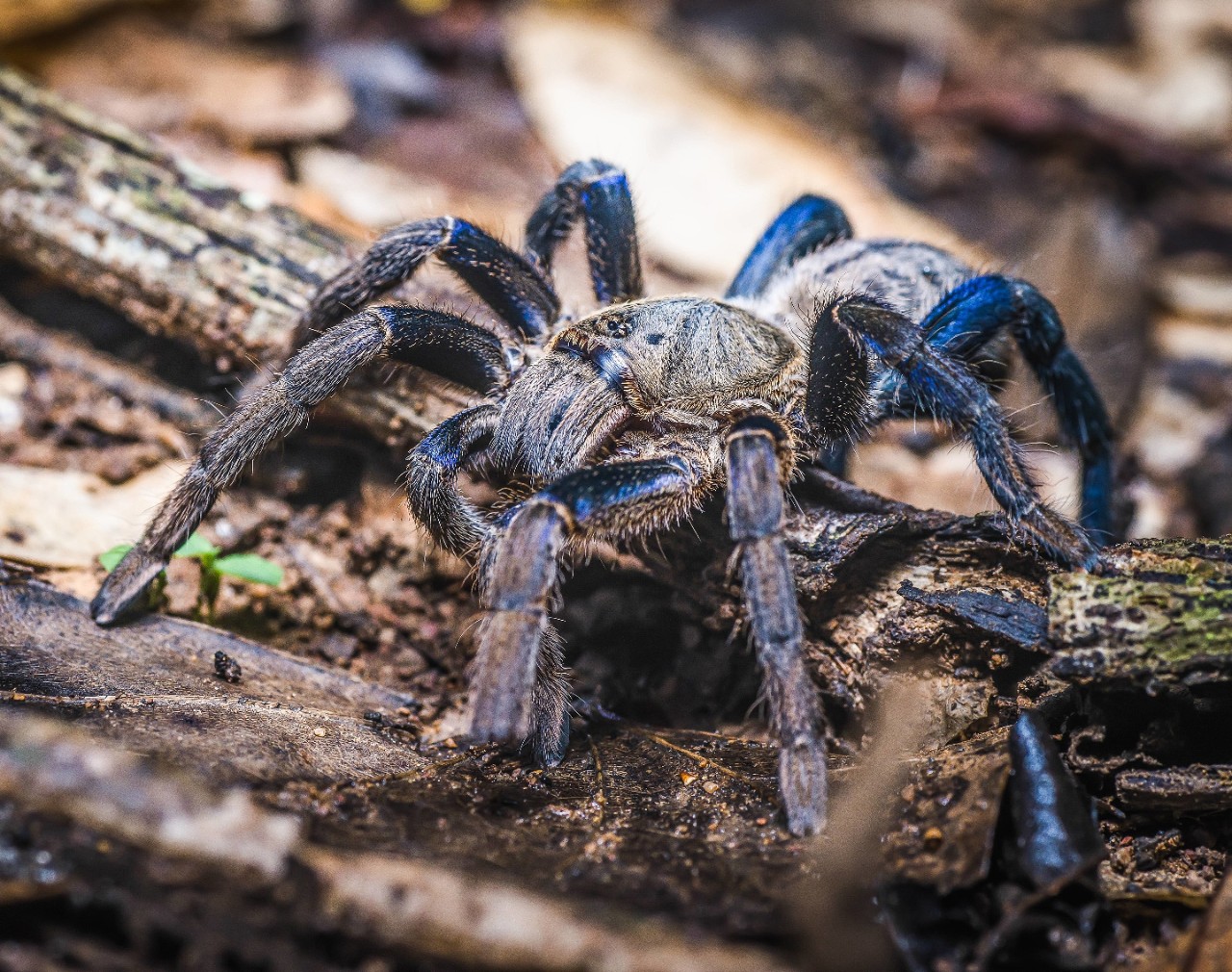
NYT: Why so blue, tarantula?
UC biologist Nathan Morehouse discusses surprising color vision in giant spiders
The New York Times reached out to a University of Cincinnati biologist to get his reaction to a study that found surprising color vision in tarantulas.
Many of these enormous, hairy spiders have subdued colors like blacks and browns. But one species called the greenbottle blue has vivid metallic-blue legs that make the spider stand out rather than blend in with its rainforest background.
The National University of Singapore found that tarantulas have a considerable diversity of the genes responsible for light and color sensitivity in vision. Its findings refute the long-held scientific consensus that tarantulas have poor color vision.

UC biologist Nathan Morehouse, far right, is working with researchers from six other countries on a three-year field project to study jumping spiders around the world. Follow their progress on Twitter and Instagram at #SeeingColorEvolve. Photo/Provided
UC associate professor Nathan Morehouse in UC's College of Arts and Sciences is an expert on spider vision. He is working on a three-year project to understand the evolution of spider vision around the world. It's supported by a grant from the National Science Foundation.
“I’m thrilled,” Morehouse told The Times. “This makes tarantulas a very exciting group moving forward to think about.”
Morehouse was not part of the study but coincidentally traveled to Singapore to study jumping spiders there for part of his NSF project. He shares his international fieldwork on Twitter and Instagram at #SeeingColorEvolve.
"While we can ooh and aah about how beautiful they can be, it's also striking how little we know about what that beauty looks like to them," Morehouse told The Times. "And I think that's true of so many animals."
UC biology professor George Uetz found equally surprising color vision present in wolf spiders, which unlike many jumping spiders have muted colors that help the tiny predators blend in with the leaf litter.
Featured image at top: A greenbottle blue tarantula. Photo/Peter Coxhead/Wikimedia Commons

In his lab, UC biology professor George Uetz found surprisingly broad color vision in wolf spiders, which are camouflaged to blend in with the leaf litter. Photo/Joseph Fuqua II/UC Creative + Brand
Related Stories
Tenecteplase no longer 'off label' for acute ischemic stroke
March 17, 2025
The University of Cincinnati's Yasmin Aziz was featured in a MedCentral article discussing the recent FDA approval of the drug tenecteplase for treatment of acute ischemic stroke.
Cold-blooded and they make great friends
March 13, 2025
First-year student Josh Lantz starts a Herpetology Club at the University of Cincinnati.
REVIEW: CCM's 'A Midsummer Night's Dream' an 'exuberant triumph
March 10, 2025
The Cincinnati Business Courier praises UC College-Conservatory of Music's production of A Midsummer Night's Dream. Presented as part of the Opera Series on March 6-9, the production was directed by Robin Guarino and conducted by alumni guest artist William Langley.
